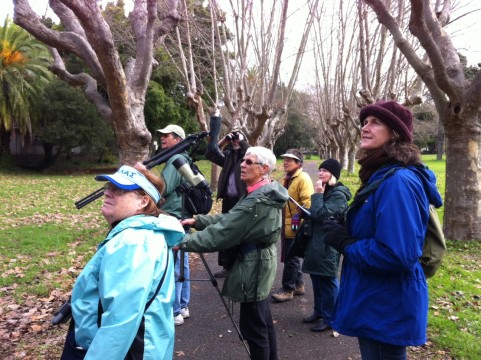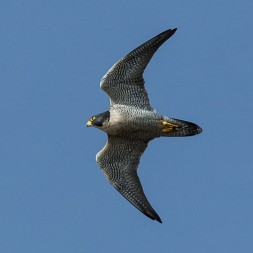
While scientific research isn’t always fun it can be a "walk in the park" when it involves bird watching. When the alarm went off at “O’dark thirty” last Sunday, I had to dig deep to find the enthusiasm to get out of bed. It has been more than 20 years since I last participated in the annual Audubon Christmas Bird Count (CBC). Held every winter, the count is one of the largest and longest-running “Citizen Science” projects in the world. Last year, the 112th count, covered 2,248 count areas: 410 “count circles” in Canada, 1,739 in the USA, and 99 in Latin America, Caribbean, and Pacific Islands. A total of 63,227 volunteer observers were out for the day of the count last year in their respective areas.
Our morning in Alameda started with a congenial, if sleepy gathering of about 30 volunteer bird watchers at our local CBC coordinator’s house. We were broken into 3 teams to cover different areas of Alameda. Two CBC veterans ably led my team. We had a mix of experienced and novice bird watchers and a very specific territory to cover. Our leaders, Marilyn and Inge, had scouted the area a few days prior and knew the best route and timing. We walked first through the cool, wooded park, listening for the quiet calling of birds in the trees. “Downy woodpecker! Ruby-crowned kinglet! Bushtit flock!” was called out for our recorder to note the species and number present, many without an actual bird in sight. Good birders can rely on the different bird vocalizations to identify the bird.
We worked our way to the pond, filled with 100 coots, then onto the beach. There the sheer numbers of overwintering shorebirds at first overwhelmed us. Trying to divide the shifting multitudes into species and get an accurate count tested our skills. “Who wants to count the Western Sandpipers? Are there any Least Sandpipers in the bunch?” our leaders asked. “How ‘bout the Dunlin? Looks like thousands of them!” With the expert birders in our midst, we were able to see some very special birds from the beach: Mew Gulls and a Bonaparte’s Gull. We even had a surprise appearance as a Peregrine Falcon swooped low over the shorebirds then flew on, empty-taloned, to perch on a sailboat mast for our viewing pleasure.

Four hours later, our three groups reconvened to review and compile our lists over some lunch. The “diehard” birders then went out after lunch to look for any expected birds that weren’t seen in the morning. Then groups from all over Oakland and Alameda converged for a celebratory dinner together. Another CBC done! You can find out more about how the data is useful to scientists at the Golden Gate Audubon website.
If you missed the CBC this year, you still have a chance to contribute to the scientific knowledge of local birds. The annual “Great Backyard Bird Count” project is February 15-18, 2013 and you don’t even have to leave home to participate! You’re welcome to join the East Bay Regional Parks naturalists to learn more about our local birds on one of their free bird watching programs.